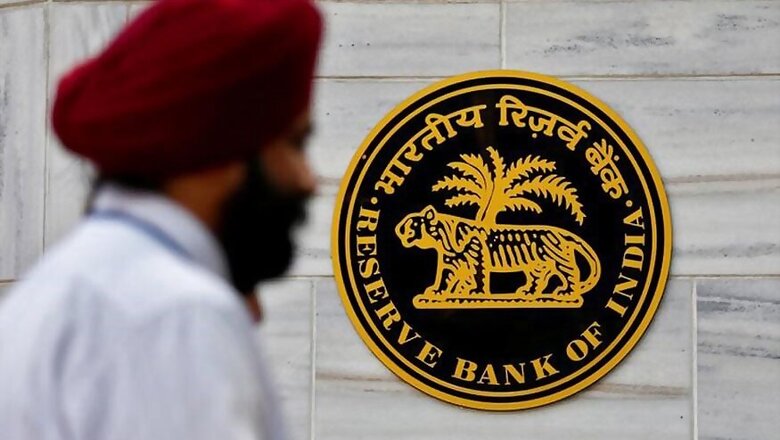
views
Mumbai: Current account deficit (CAD) jumped over three times to $48.7 billion, or 1.9 per cent of the country's GDP, in FY18 from $14.4 billion or 0.6 per cent in the previous year, driven by higher trade deficit, Reserve Bank said on Wednesday.
For the March quarter, CAD, which is the difference between forex receipts and payments, rose manifold to over $13 billion, or 1.9 per cent of GDP, from a low $2.6 billion, or 0.9 per cent, in the year-ago period, the RBI said.
In the December quarter, the deficit stood at a higher 2.1 per cent. The CAD is a keenly watched space that signifies the strength of an economy from an external sector point of view and also influences the currency markets.
In 2013, the rupee was affected significantly because of a record high CAD that shot past 5 per cent of GDP. Trade deficit for the entire fiscal shot up to $160 billion from $112.4 billion, the central bank said, adding earnings from services increased to $77.6 billion from $68.3 billion.
Gross foreign direct investment rose marginally to $61 billion, while there was a sharper moderation on a net basis to $35.6 billion from $30.3 billion in the year-ago period. However, portfolio flows from investors zoomed-up to $22.1 billion for FY18 as against $7.6 billion in FY17.
There was an accretion of $43.6 billion to the forex reserves during the fiscal year, the apex bank said. For the quarter, trade deficit widened to $41.6 billion primarily due to an increase in merchandise imports.
Private transfer receipts, mainly representing remittances by NRIs, were 15.1 per cent up at $18.1 billion for the quarter, it said.
The net FDI improved to $6.4 billion for the March quarter from $5 billion a year ago, while the portfolio flows were majorly impacted with a net inflow of $2.3 billion as against $10.8 billion a year ago.
Net receipts on account of non-resident deposits amounted to $4.6 billion in the reporting quarter compared to $2.7 billion a year ago, it said.
The forex kitty rose by $13.2 billion compared to $7.6 billion in the same quarter last year, it said. Commenting on the numbers, Aditi Nayar, principal economist at domestic agency Icra said, though the numbers have deteriorated overall, it was driven largely by the massive increase in Q4 which stood at $13 billion, and was expected.
"Q4 deficit, which is close to the full year gap recorded in FY17, underscores that rising commodity prices have on the external balances of net importers like India," she said, adding the full-year rise was driven to some extent by the sharper outflow of primary income.
She also projected higher CAD for FY19 at $65-70 billion or 2.4 per cent due to higher crude prices which may average at $/barrel in FY2019 up from $56 in FY2018, and an 8 per cent rise in net import volumes, which would boost net oil imports by $30 billion to $fhereFF100 billion in FY2019.
But on a positive side, she said higher crude prices and a weaker rupee would improve remittances and the export competitiveness.




















Comments
0 comment